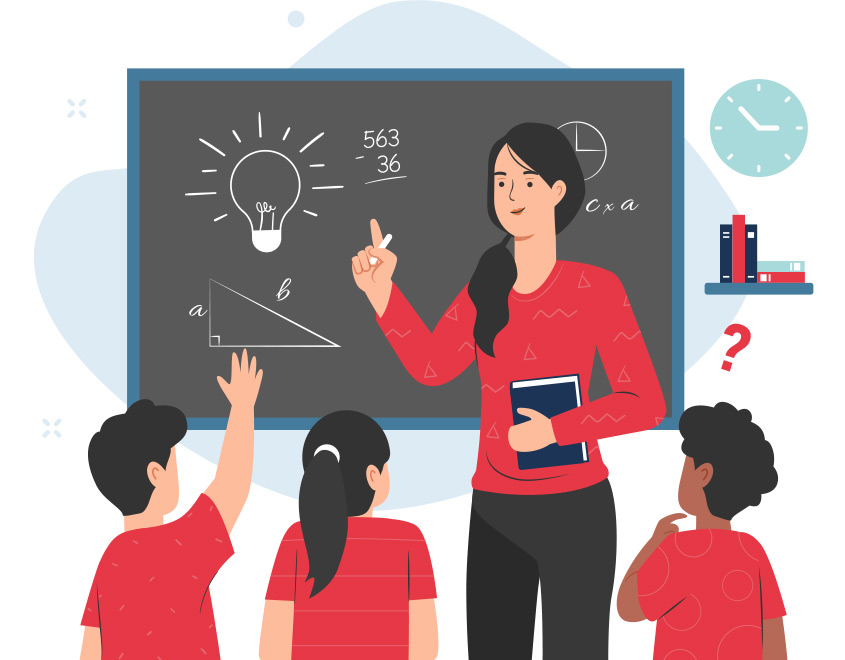The Best Primary Science Tuition Singapore for Effective Learning Methods
The Best Primary Science Tuition Singapore for Effective Learning Methods
Blog Article
A Comprehensive Guide to the Various Knowing Methods in Primary Science Direction
The expedition of varied learning techniques in key scientific research instruction presents a possibility for instructors to boost pupil involvement and understanding considerably. By checking out hands-on knowing strategies, inquiry-based techniques, and collective techniques, we can recognize reliable practices that cater to different discovering designs.

Hands-On Discovering Techniques
Hands-on understanding methods play a pivotal role in key science direction, engaging trainees in energetic exploration and trial and error. These approaches enable learners to engage directly with phenomena and materials, cultivating a deeper understanding of clinical concepts. By utilizing manipulatives, versions, and real-life experiments, teachers develop an atmosphere where students can observe, assume, and examine their concepts.
Such methods not just improve understanding yet additionally cultivate critical thinking and analytical abilities. When students join activities like constructing straightforward makers, planting seeds, or carrying out chain reactions, they are urged to ask inquiries and seek responses via their own observations. This experiential approach assists to demystify complex clinical concepts, making them extra relatable and available.
Moreover, hands-on discovering advertises collaboration among peers, as pupils usually operate in groups to perform experiments or share searchings for. This team effort not only improves their knowing experience but likewise develops important social abilities. Ultimately, incorporating hands-on strategies in key scientific research instruction cultivates a long-lasting love of understanding and curiosity concerning the all-natural world, laying a strong structure for future academic searches in science and past.
Inquiry-Based Knowing
Inquiry-based understanding is an educational technique that urges students to ask concerns, investigate phenomena, and construct their very own understanding of scientific principles. This method changes the focus from traditional teacher-led direction to a much more student-centered experience, where students take the effort in their instructional trip. By fostering inquisitiveness, inquiry-based discovering promotes deeper involvement with the product, enabling students to explore topics in a meaningful context.
In technique, this strategy often includes hands-on experiments, observations, and crucial thinking activities that line up very closely with the clinical approach. Students are encouraged to create theories, style investigations, and assess data, which grows necessary abilities such as analytical and analytic reasoning. The role of the instructor in this structure is to help with expedition, guiding trainees through the questions process while urging independent thought and collaboration.
Additionally, inquiry-based knowing supports a sense of ownership over the discovering procedure, motivating trainees to go after expertise proactively. This approach not just improves understanding of clinical ideas however also promotes a lifelong love for discovering, furnishing pupils with the skills necessary to navigate an increasingly complicated world.
Collaborative Discovering Approaches
Collaborative discovering strategies empower students to participate in significant communications with peers, fostering a shared duty for their instructional results. In primary scientific research direction, these approaches encourage learners to function together to explore scientific concepts, solve problems, and carry out experiments (primary science tuition Singapore). By joining group tasks, trainees can take advantage of varied point of views, permitting richer understanding and retention of scientific understanding
One secret facet of joint understanding is the focus on communication skills. Trainees have to express their ideas, listen actively to others, and negotiate concepts, every one of which are crucial expertises in both real-world and academic contexts. This social communication not only enhances their understanding of clinical principles yet additionally advertises teamwork and conflict resolution skills.
In addition, joint discovering usually leads to raised inspiration and involvement. They are extra most likely to take possession of their discovering trip when students see the look what i found value of their payments within a group. Teachers can promote this procedure by creating structured group tasks that straighten with educational program objectives while providing support on effective partnership strategies. Overall, including collective learning strategies in primary science direction cultivates a dynamic understanding atmosphere that prepares pupils for future scholastic and social difficulties.
Modern Technology Combination in Scientific Research
The integration of innovation in key scientific research direction enhances finding out experiences by supplying innovative tools and resources that sustain numerous teaching methods, including collective learning - primary science tuition Singapore. Making use of digital systems, simulations, and interactive applications enables students to engage deeply with scientific ideas, check helping with an extra hands-on technique to knowing
Virtual laboratories, for example, allow learners to perform experiments securely and successfully, promoting inquiry-based understanding. These tools can simulate real-world clinical scenarios, permitting trainees to visualize intricate processes that would certainly be challenging to replicate in a standard classroom setup. In addition, innovation promotes interaction and cooperation among trainees, as they can share findings and collaborate on tasks via on the internet systems.
Additionally, multimedia discussions and academic video clips can enhance lessons by accommodating diverse knowing styles, making abstract principles extra available. Data analysis devices likewise encourage trainees to gather and analyze clinical data, strengthening crucial assuming skills. On the whole, the tactical incorporation of innovation in primary scientific research instruction not only enhances engagement however likewise prepares pupils for a highly innovative society, equipping them with important skills for future scientific endeavors.
Separated Instruction Strategies
Distinguished guideline methods are necessary for addressing the varied needs of students in primary you can find out more scientific research education and learning. These techniques enable educators to customize their mentor approaches to fit differing abilities, interests, and discovering styles within the class. By employing separated direction, teachers can create a comprehensive atmosphere that fosters engagement and boosts understanding of clinical principles.
One reliable approach is to make use of flexible grouping, which enables pupils to collaborate with peers at comparable ability levels or with varying perspectives. This strategy encourages peer discovering and promotes crucial reasoning. In addition, offering choices in tasks can empower pupils, allowing them to choose tasks that reverberate with their passions while still meeting curricular goals.
Furthermore, integrating tiered jobs is an additional valuable strategy. By creating tasks with differing levels of complexity, instructors can ensure that all students are properly challenged, no matter their efficiency. Utilizing formative evaluations to evaluate comprehending more allows teachers to change their training techniques dynamically, making certain that each learner obtains the assistance they need.
Inevitably, executing separated direction strategies in key science education not just boosts trainee learning results but also grows an interest for scientific research, preparing pupils for future academic pursuits.

Verdict
In recap, efficient main science direction demands a diverse method that includes hands-on understanding, inquiry-based techniques, and collaborative strategies. The integration of innovation and separated direction further caters to varied learning styles, fostering a setting conducive to expedition and crucial reasoning.
The exploration of diverse learning approaches in key scientific research direction provides a chance for educators to enhance student involvement and comprehension dramatically.Hands-on knowing methods play an essential duty in primary science instruction, involving pupils in active expedition and experimentation.Inquiry-based knowing is a training approach that urges pupils to ask inquiries, investigate sensations, and build their very own understanding of clinical concepts.Collaborative knowing methods encourage students to involve in purposeful communications with peers, promoting a common duty for their instructional outcomes. On the whole, including collaborative understanding methods in main scientific research instruction cultivates a vibrant discovering atmosphere that prepares trainees for future scholastic and social obstacles.
Report this page